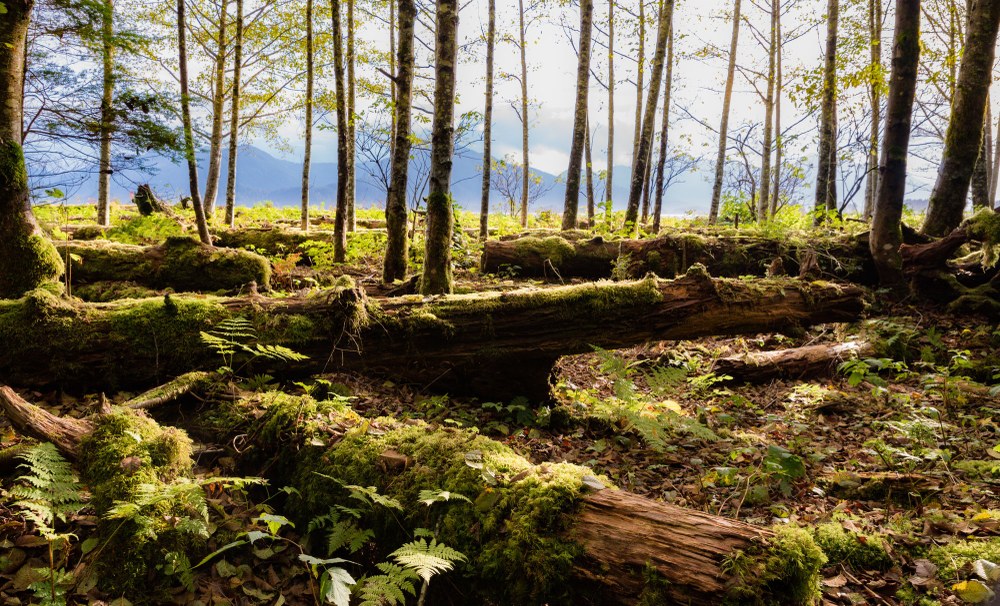
Perhaps you remember us sharing information about the Roadless Rule previously – it’s an important (and lesser-known) tool that protects wild landscapes on US Forest Service lands. As outdoor enthusiasts, we know our community cares about both conservation and recreation, and the Roadless Rule is vitally important for both. Right now the Forest Service wants to hear what you think about their proposal to exempt the Tongass National Forest in Alaska from the Roadless Rule.
We are concerned that exempting the Tongass from the Roadless Rule will pave the way for similar action on other forests. Just like you rallied to protect Bears Ears, and the Antiquities Act (the law that allows the creation of - and protects - National Monuments), a threat to the Roadless Rule in one corner of our national public lands is a threat to all of our Roadless areas, including the ones you’re most connected to.
You can take action now, or read on for more information about the Roadless Rule and what’s at stake with the Tongass.
What is a Roadless Area?
National Forests provide lots of resources to Americans, including timber, fresh water, clean air, and access to outdoor recreation. Right now, about 50% of our National Forest land is open to drilling, logging, and mining; and 18% is protected as designated Wilderness. The remaining 30% of forests are known as Roadless Areas. These remote, un-developed landscapes are treasured by our community for the backcountry recreation experiences they provide. These landscapes are governed by the Roadless Rule.
The Roadless Rule was established in 2001 after enormous public outreach and was intended to “provide lasting protection in the context of multiple-use management” for the 60 million acres of roadless areas on our National Forests and Grasslands. What this means is that we cannot build new roads or harvest timber on these roadless areas, but they are still open for a range of recreational activities, including climbing, hiking, mountain biking, paddling, and backcountry skiing. While these areas are protected from development, these protections are less restrictive than Wilderness as it relates to the types of recreation allowed within roadless areas.
Why is the Roadless Rule Important?
- The Roadless Rule helps to conserve public lands and protect a range of recreational opportunities in the backcountry.
- Protecting roadless areas from large-scale mining, oil and gas drilling, logging, and new road construction directly protects outdoor experiences: these landscapes are integral to backcountry recreation, providing wild places to explore on foot, by bike, or on the water.
- Intact forests provide clean water, wildlife habitat, and protection for sensitive plant species - creating healthy landscapes where we can find adventure. From mountaineering to sea kayaking, the Tongass is a setting of incredible outdoor recreation.
- Roadless forests are important to climate solutions: these forests are our most effective method for capturing and storing carbon emissions. Specifically, to the US Forest Service proposal in Alaska, the Tongass National Forest is not only our largest national forest, it’s the largest intact temperate rainforest in North American, and it captures an enormous amount of carbon. The old growth trees in the Tongass are champions of combating climate change, storing 8% of the carbon captured on National Forest lands in the country.
The U.S. Forest Service’s Proposal for the Tongass
The US Forest Service has proposed exempting the entire Tongass National Forest from the Roadless Rule. This means opening this one-of-a-kind landscape - it’s old growth trees and the ecosystem they create, which adventurers thrive in and wildlife depend upon - to logging.
With this proposal comes a required comment period (thanks to the National Environmental Protection Act!) on their Draft Environmental Impact Statement - which is your opportunity to support the Roadless Rule.
Click the button below to ask the Forest Service support the “no action alternative,” keeping the Roadless Rule in effect on the Tongass National Forest.
 The Mountaineers
The Mountaineers